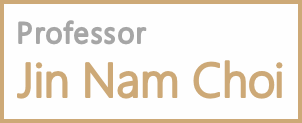69. *Kim, H. H., & Choi, J. N. (2022). Why and when others reciprocate my knowledge sharing in work teams: Attribution of intention and social values. Social Behavior and Personality, 50, 1-12.
*Kim, H. H., & Choi, J. N. (2022). Why and when others reciprocate my knowledge sharing in work teams: Attribution of intention and social values. Social Behavior and Personality, 50, 1-12.
68. *Sung, S. Y., & Choi, J. N. (2021). Team psychological needs and radical versus incremental creativity of work teams. Human Performance, 34, 149-167.
*Sung, S. Y., & Choi, J. N. (2021). Team psychological needs and radical versus incremental creativity of work teams. Human Performance, 34, 149-167.
67. *Luo, Y. J., Li., Y. P., Choi, J. N., & Du, J. (2020). Visionary leadership effectiveness: Moderating roles of power distance and middle-way thinking. Social Behavior and Personality, 48, 1-12.
*Luo, Y. J., Li., Y. P., Choi, J. N., & Du, J. (2020). Visionary leadership effectiveness: Moderating roles of power distance and middle-way thinking. Social Behavior and Personality, 48, 1-12.
66. *Seong, J. Y., & Choi, J. N. (2021). Multilevel homology and discontinuity of person–group fit on individual and team creativity. Journal of Social Psychology, 163, 269-286.
*Seong, J. Y., & Choi, J. N. (2021). Multilevel homology and discontinuity of person–group fit on individual and team creativity. Journal of Social Psychology, 163, 269-286.
65. *Park, I.-J., Choi, J. N., Wu, K. (2021). Affect stability and employee creativity: The roles of work-related positive affect and knowledge sharing. European Journal of Work and Organizational Psychology, 31, 331-340.
*Park, I.-J., Choi, J. N., Wu, K. (2021). Affect stability and employee creativity: The roles of work-related positive affect and knowledge sharing. European Journal of Work and Organizational Psychology, 31, 331-340.
64. * Sung, S. Y., & Choi, J. N. (2021). Contingent effects of workforce diversity on firm innovation: High-tech industry and market turbulence as critical environmental contingencies. International Journal of Human Resource Management, 32, 1986-2021.
* Sung, S. Y., & Choi, J. N. (2021). Contingent effects of workforce diversity on firm innovation: High-tech industry and market turbulence as critical environmental contingencies. International Journal of Human Resource Management, 32, 1986-2021.
63. *Sung, S. Y., & Choi, J. N. (2021). What drives firms to invest in training and developing employees? Time-dependent effects of firm internal and external situations. International Journal of Human Resource Management, 34, 223-252.
*Sung, S. Y., & Choi, J. N. (2021). What drives firms to invest in training and developing employees? Time-dependent effects of firm internal and external situations. International Journal of Human Resource Management, 34, 223-252.
62. *Hwang, T. J., & Choi, J. N. (2020). Different moods lead to different creativity: Mediating roles of ambiguity tolerance and team identification. Creativity Research Journal, 32, 161-173.
*Hwang, T. J., & Choi, J. N.(2020) Different moods lead to different creativity: Mediating roles of ambiguity tolerance and team identification. Creativity Research Journal, 32, 161-173.
61. *Sung, S. Y., Rhee, Y. W., Lee, J. E., & Choi, J. N. (2020). Dual pathways of emotional competence toward incremental and radical creativity: Resource caravans through feedback-seeking frequency and breadth. European Journal of Work and Organizational Psychology, 29, 421-433.
*Sung, S. Y., Rhee, Y. W., Lee, J. E., & Choi, J. N.(2020). Dual pathways of emotional competence toward incremental and radical creativity: Resource caravans through feedback-seeking frequency and breadth. European Journal of Work and Organizational Psychology, 29, 421-433.
60. *Seong, J. Y., & Choi, J. N. (2019). Is person–organization fit beneficial for employee creativity? Moderating roles of leader–member and team–member exchange quality. Human Performance, 32, 129-144.
*Seong, J. Y., & Choi, J. N. (2019). Is person–organization fit beneficial for employee creativity? Moderating roles of leader–member and team–member exchange quality. Human Performance, 32, 129-144.
